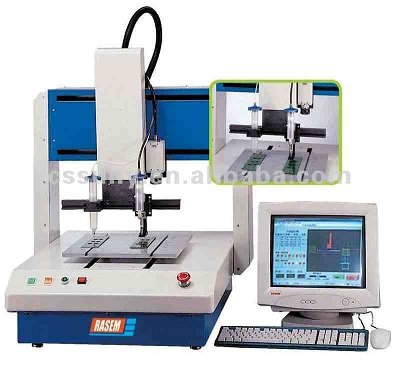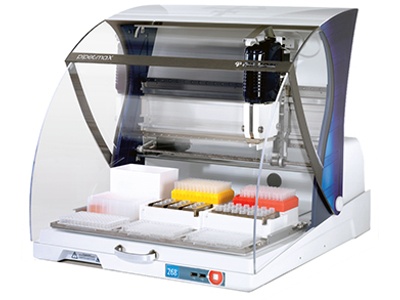
According to Bennet Brumson of Robotics Online, dispensing is one of the more demanding and varied robotic applications due to the range of tasks demanded of it and its need for precision. From dispensing fluids to wire to tape, this application can be especially rewarding compared to traditional systems. A big key to success knows what is possible and how to properly justify the technology. It also helps to understand the subtle but often significant difference between coating and dispensing.
''Just about any fluid that can be pumped, including chocolate, can be dispensed robotically,'' asserts John Burg, president of Meritage Manufacturing Solutions (MMS).
Meritage is a robotic systems integrator from Warrenville, IL. Robotic dispensing is similar yet quite different from coating applications. Coating applications, such as painting, are less exacting in both robot accuracy and part positioning. This is balanced by the fact that, unlike most painting work cells, dispensing applications rarely need to be explosion proof.
''There is a need to be more precise in dispensing over coating applications. For example, if a robot cuts a corner a small amount in a coating application, it won't be noticed too much,'' said Steven Krotzer, an applications engineering manager at Staubli Unimation, Inc. of Duncan, SC. ''In dispensing, where a recess is involved, the robot must follow a very precise path. This can't vary too much, even by half a millimeter, since the sealant or adhesive might need to go into that groove or recess. In coating, the thickness of a coat of paint can vary, but this is difficult to measure and much less important than in dispensing adhesives or sealers.'' Krotzer went on to explain that CAD data or machine vision systems are deployed to meet this requirement of precision.

''There is a need for higher accuracy in robotic paths in dispensing applications. In painting applications, the robot applicator spray pattern usually covers an area 20 to 25 cm wide,'' said George Wilson, a proposal engineer at Behr Systems, Inc. ''For instance, if a paint robot's path varies by one or two millimeters, it is not seen and generally does not become an issue for quality. If a dispensing (seam sealing) robot's path vary by the same one or two millimeters, then the welded seam is left uncovered and susceptible to water leakage. For this reason, the robot controllers used for dispensing (seam sealing) operations use a more sophisticated algorithm enabling the robot to 'track' its path more accurately improving the quality of the applied media.
Generally, seam sealing requirements include applying a bead of material 25 mm wide, 5 mm thick with +/- 0.5 mm deviation.'' Behr Systems, Inc. is a division of the Durr Group and has its U.S. base in Auburn Hills, MI.
In addition to the need for the robot to be relatively accurate, dispensing work cells need to have precise part placement. Due to it’s important role in different areas of the industry.
Item Dispensing Machines, also commonly referred to as ‘A-Frames’ due to their distinctive shape, are often found in very high speed order filling applications. The machines are most often applied dispensing relatively small items from vertical magazines containing multiple ‘eaches’ of the same product. The dispensing is done under computer control towards the center of the machine often to a consolidation tote or dedicated belt segment.

Applications are very common in pharmaceutical and OTC (over the counter) drug distribution operations, or change the flow of the dispensed liquid when slowing for corners. Otherwise there will be an undesirable accumulation of material on corners. Open loop systems have the advantage being less expensive than closed loop structures, while they require more programming time. Closed loops generally have more consistency in flow rates than do systems with open loops.
The most challenging variable in dispensing applications is maintaining a constant speed of the robot, especially around corners. If the speed of the robot changes, the flow rate of the material being dispensed must change accordingly to match it,'' contends Staubli's Krotzer. The bead will vary in size with changes in speed of the dispensing head. Staubli's system has an automatic correction feature. When the robot is cutting a corner, the system's software compares deviation from where the bead was placed to where it should have been put. The software ''learns'' from this and makes a correction the next time by measuring deviation from an ideal speed and trajectory.
References
Brumson, Bennet. Dispensing Profits with Dispensing Robots
http://www.roboticsonline.com/public/articledetails.cfm?id=789. Feb. 09, 2005.
http://www.roboticsonline.com/public/articledetails.cfm?id=789. Feb. 09, 2005.
Bame, Allen and Paul Cummings (1998). Exploring Technology. U.S.A.: Delmar Publishers, Inc.
Fu, K.S. and R.C. Gonzales (1987). Robotics. Singapore: Chong Moh Offset Printing Pte Ltd.
No comments:
Post a Comment